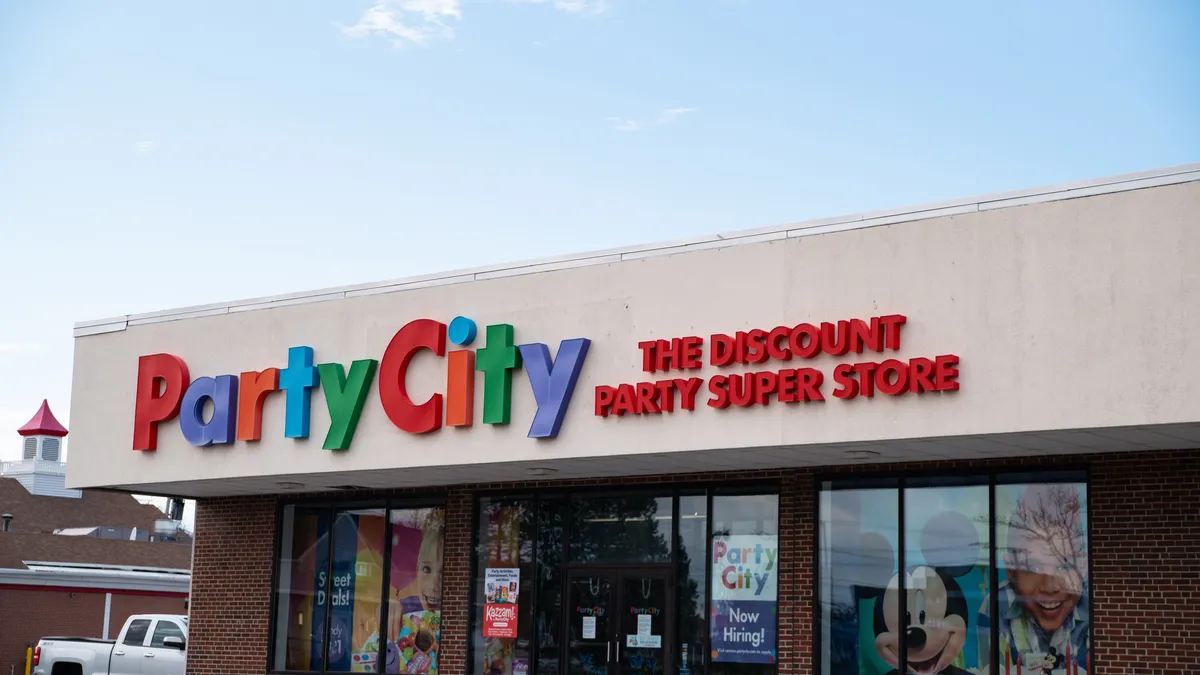Dive Brief:
- Top-line sales at Party City rose 1.4% in the first quarter, with retail sales up 2.3%, according to a press release.
- The company posted an operating loss of $20 million for the quarter while higher supply chain, material, merchandise and labor costs led to a hit to profit margins of 380 basis points, and higher store and corporate labor costs increased operating expenses.
- Party City executives told analysts that, even after working to diversify and secure helium sources since 2018, they expect to pay higher-than-expected prices to meet peak balloon season tied to graduations in Q2, making for an estimated $7 million headwind.
Dive Insight:
Few if any retailers are quite as tied to balloons as Party City. The company makes $92 million from its balloon distribution channel, and is revamping its store fleet to, in part, bring more attention to its balloon service.
Some form of the word "balloon" appears in Party City's 10-K 40 times, and "helium" appears another 10 times. Party City gives the vagaries of the balloon and helium markets their own heading in the company's list of potential business risks.
At the end of the previous decade, those risks were as apparent as ever, when helium shortages led to major sales and profit hits at Party City, sparking the retailer revamp its sourcing to, among other things, enlarge and diversify its supplier base and contract its own wells.
Analysts on the company's Q1 conference call Monday peppered executives with questions about the $7 million hit management expects to take on helium as spot rates spike. The helium cost pressures the company is feeling differ significantly from past years and is largely due to logistical issues in the market, according to Party City executives.
The pressures from helium add to across-the-board supply chain challenges for many retailers. At Party City, executives said, the company has already brought in more Halloween inventory or has that inventory on the oceans, compared to last year, when supply chain issues spiraled for many categories. The company also plans to charter its own ships, as it did last year.
For Q1, Party City missed analyst estimates for sales and profit, according to Seeking Alpha. Along with a drop in traffic from omicron in January, executives said in March they began seeing consumers reacted to price inflation, the end of stimulus payments, war in Europe and headlines around interest rate hikes.
The various challenges led the company to cut its outlook for the year slightly, with roughly $50 million in sales dropped from top-line guidance compared to earlier estimates.
In the year ahead, Party City plans to remodel up to 125 stores in its next-generation format, introduce hundreds of new products and launch a new website.












